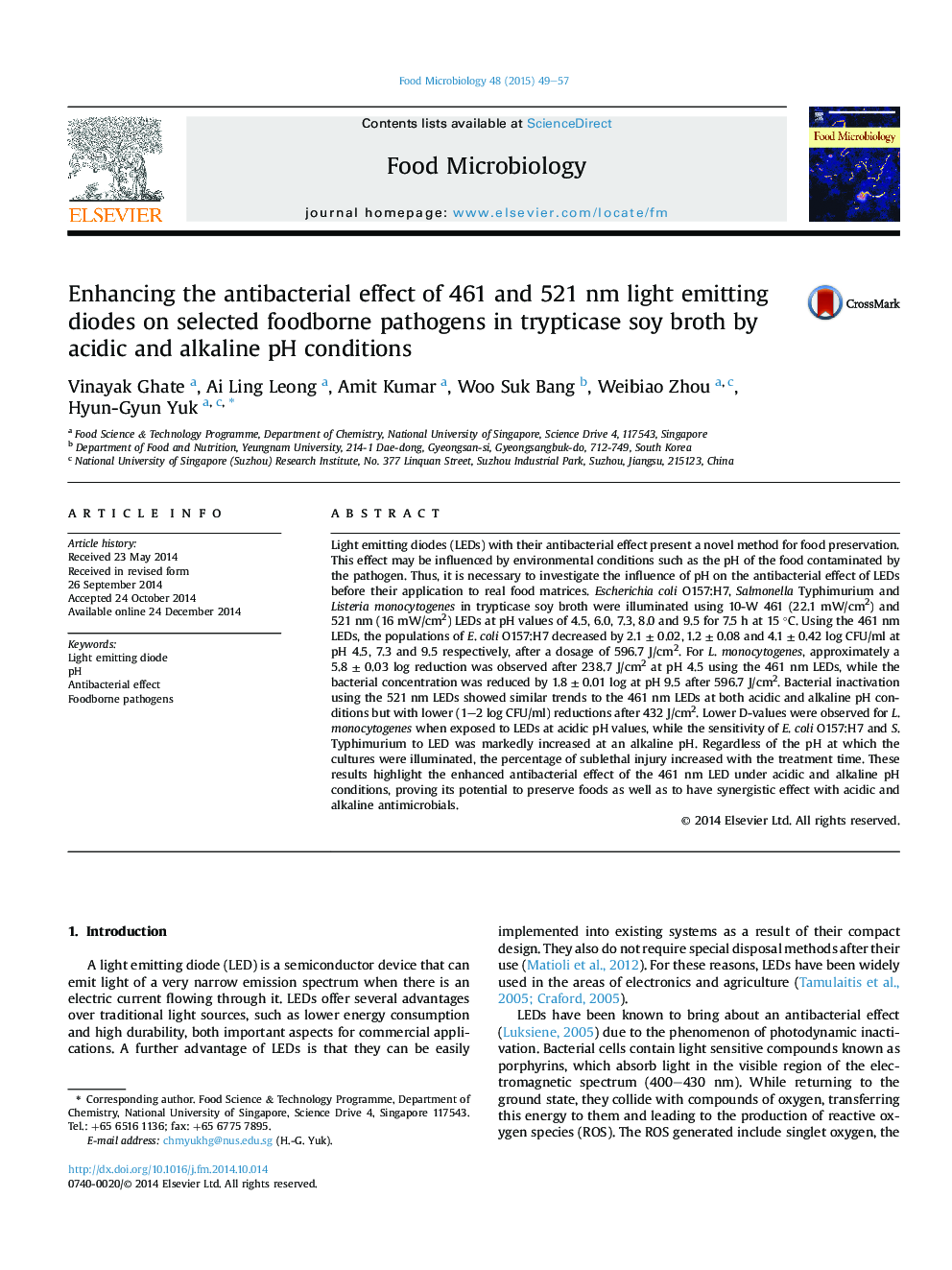| Article ID | Journal | Published Year | Pages | File Type |
|---|---|---|---|---|
| 4362787 | Food Microbiology | 2015 | 9 Pages |
•The antimicrobial effect of LEDs was enhanced at acidic and alkaline conditions.•Escherichia coli O157:H7 and Salmonella Typhimurium were more susceptible to LEDs at an alkaline pH.•Listeria monocytogenes was more susceptible to LEDs at an acidic pH.•Results suggest that the LED should be applied selectively to foods.
Light emitting diodes (LEDs) with their antibacterial effect present a novel method for food preservation. This effect may be influenced by environmental conditions such as the pH of the food contaminated by the pathogen. Thus, it is necessary to investigate the influence of pH on the antibacterial effect of LEDs before their application to real food matrices. Escherichia coli O157:H7, Salmonella Typhimurium and Listeria monocytogenes in trypticase soy broth were illuminated using 10-W 461 (22.1 mW/cm2) and 521 nm (16 mW/cm2) LEDs at pH values of 4.5, 6.0, 7.3, 8.0 and 9.5 for 7.5 h at 15 °C. Using the 461 nm LEDs, the populations of E. coli O157:H7 decreased by 2.1 ± 0.02, 1.2 ± 0.08 and 4.1 ± 0.42 log CFU/ml at pH 4.5, 7.3 and 9.5 respectively, after a dosage of 596.7 J/cm2. For L. monocytogenes, approximately a 5.8 ± 0.03 log reduction was observed after 238.7 J/cm2 at pH 4.5 using the 461 nm LEDs, while the bacterial concentration was reduced by 1.8 ± 0.01 log at pH 9.5 after 596.7 J/cm2. Bacterial inactivation using the 521 nm LEDs showed similar trends to the 461 nm LEDs at both acidic and alkaline pH conditions but with lower (1–2 log CFU/ml) reductions after 432 J/cm2. Lower D-values were observed for L. monocytogenes when exposed to LEDs at acidic pH values, while the sensitivity of E. coli O157:H7 and S. Typhimurium to LED was markedly increased at an alkaline pH. Regardless of the pH at which the cultures were illuminated, the percentage of sublethal injury increased with the treatment time. These results highlight the enhanced antibacterial effect of the 461 nm LED under acidic and alkaline pH conditions, proving its potential to preserve foods as well as to have synergistic effect with acidic and alkaline antimicrobials.
